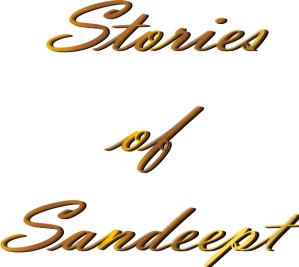We humans have always been guided by two fundamental systems: Faith and Science. Faith implores us to live life as it is and accept what comes in life as the will of God or fate. It has its own pros and cons, which I shall not discuss here. Science, on the other hand, urges us to transcend the boundaries that are created by our surrender to the fate. The advancement in medicine and technology is the result of inquisitive minds who studied the nature and imagined what else they could do with the knowledge they gained. They also disseminated the knowledge they obtained so that it would not be lost with time.
Suppression of knowledge and scientific inquisition in Europe during the Middle Age (5th to15th century) led to numerous wars, widespread famine and submission to fate. During this period in the history of humanity, also known as the Dark Age, several scientific discoveries are said to have lost. Scientists were termed “heretics” by the Church and were executed. The Renaissance Period, of which the Republic of Florence and Leonardo da Vinci are central, gave rise to art and through it, promotion of scientific discoveries, inventions and rediscoveries.
In the ancient Indian sub-continent (most of the times attributed to the Indus Valley Civilization), the Vedas and Upavedas, and later the Upanishads promoted the culture of scientific and logical discourse. Proverb such as Vaade Vaade Jaayate Tatwabodha (वादे वादे जायते तत्वबोध:), i.e. knowledge is gained through debates is alone sufficient to understand the importance of discourses in order to discover the truth of the world. The knowledge however came under the control of few people on the administration for centuries. The lack of effective dissemination of the ancient wisdom has created a lot of problems in the sub-continent.
Scientific discoveries have made things possible that were treated only as imagination in the past. The discovery of sea-routes brought people closer, the invention of aeroplane reduced the time for the journeys between different parts of the world, the invention of telegraph and telephone changed the way messages were shared. On the basic principles of navigation, aerodynamics and telecommunication, the humanity has moved from the Age of Cultivation to Age of Global Communication.
Not just that, humanity has also given up the instant submission to fate. In the Dark Age, Black Plague killed thousands of people in Europe. Venice, because of the lack of burial grounds, suffered the most. Instead of contemplating that the disease was spreading through the canals, they believed they were suffering the wrath of God and their loss was God’s will. In the modern age, humans do not readily submit to Faith when they encounter diseases. They investigate the disease, their causes and work on the vaccines and inoculation.
As students of Geology, a branch of science, we have gained some fundamental knowledge about the Earth and how it works during the four-year B.Sc. programme. We have learnt to observe the rocks and soils, to ask what they are and why they are there. We have familiarized ourselves with the Earth processes and the benefits and the problems they bring. We have studied about natural hazards and some ways to mitigate them. We can strive to learn more and publicize what we know. We can make the world a better place.
There is no doubt that the Earthquake of 2072 B.S. (2015) gave rise to a mass awareness about how that particular earthquake occurred. Some people used to say, with much politicisation, “There are two plates: Indian and Chinese. The Indian plate moves to the North to encroach the Chinese plate. Nepal is in middle. That was why the earthquake occurred.”
While I myself tried to remove politics whenever I could, there is a mass of people who believe the above statement to be true. They are right that Nepal lies in between two plates. But most of them are not aware what “plate” really is and that the Earth’s lithosphere is made of a number of plates. As a student of Geology, I feel that we have a lot to do to make the public aware of what the plates are and how they are formed.
We, ourselves however should be ready to face skepticism. Science is not a belief system. Whenever scientists come across hypotheses and theories, they first question, “Is it true? What are the evidences?” A hypothesis can become a major theory if evidences support it. The theory of Plate Tectonics is a common example. If the evidences from submarine navigation and Paleomagnetic studies had not been available, the theory would still have remained a hypothesis. Similarly, if a new hypothesis can challenge and prove that it is stronger than an existing theory, the existing theory, even if popular, will be discarded.
Many people put a blame upon science for the problems we’ve been facing. Sure, guns and bombs have been developed by science and are being used to inflict terrors. Nuclear weapons have threatened the existence of our dear home itself. The knowledge of making explosives and harnessing nuclear energy was not bad itself. Gunpowder and dynamite were used in construction works, and nuclear energy has become an important source of energy in many nations. That’s why I firmly believe that it’s not science that is faulty. The fault is on our crooked desire of using knowledge that we have.
In short, as a student of science, I appeal to everyone to gain right knowledge from the nature, from each other and from what our ancestors have passed on to us. I urge everyone to deliver the knowledge to the public and to the generations to come. Because only with the right knowledge, we the make the world a better place.
[The above article was intended to be the editorial for GEOWORLD Students’ Magazine, Vol. 8, 2017. It was heavily cut in the magazine for the sake of relevance and space]

